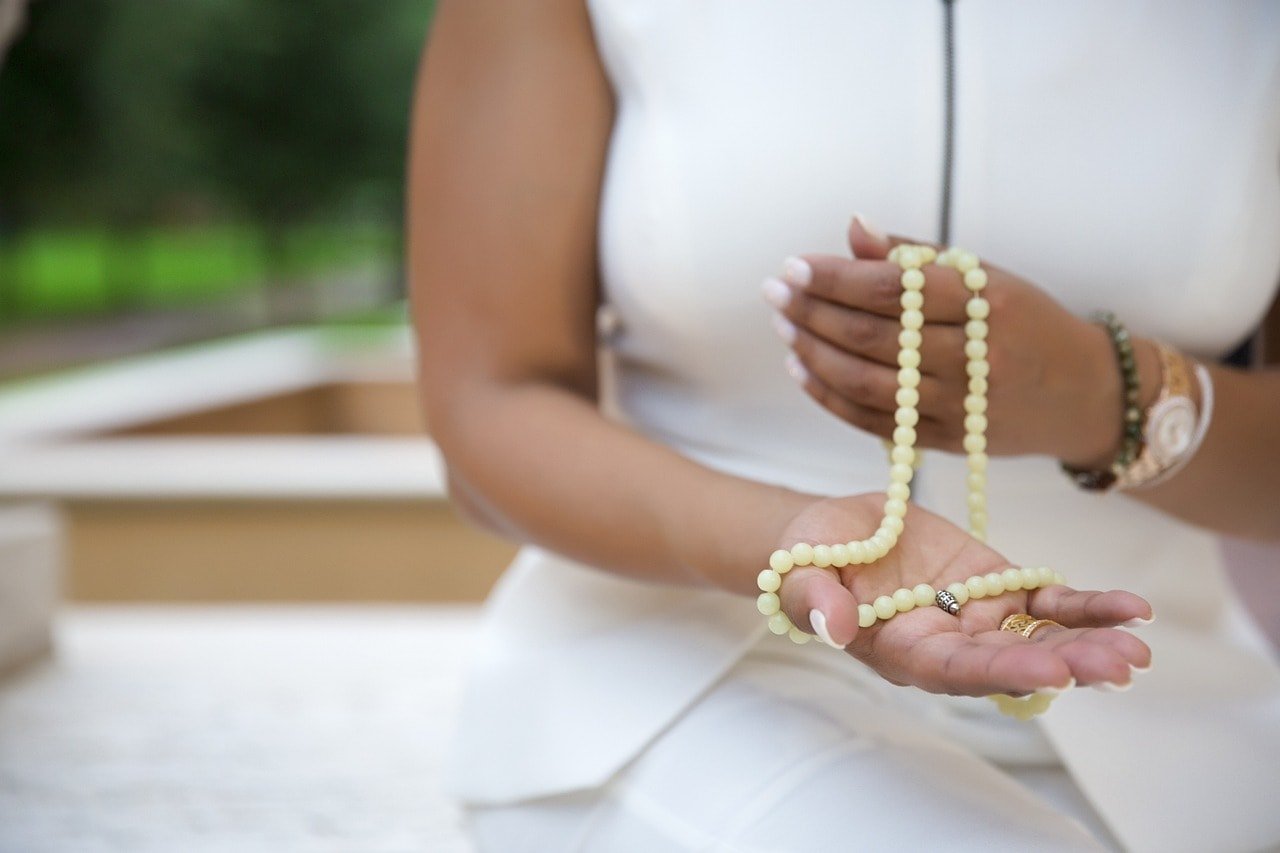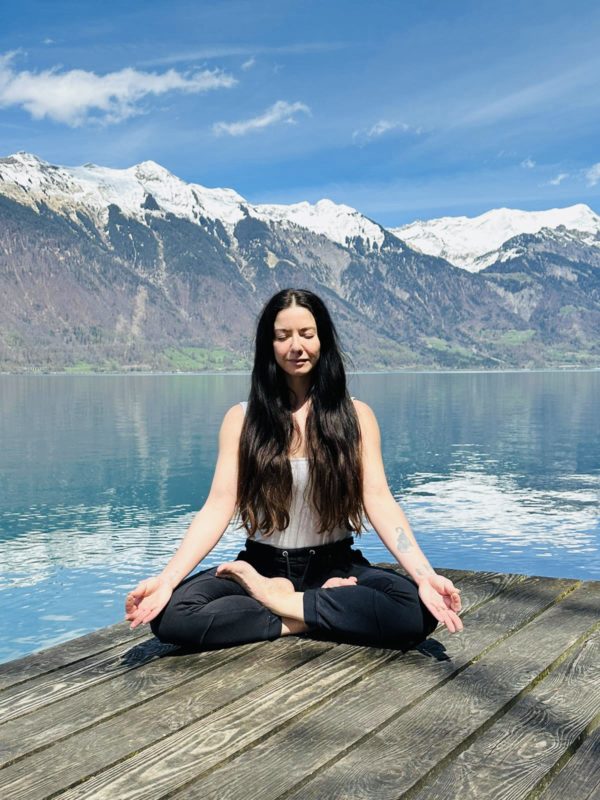A guide to Patanjali’s Eight Limbs of Yoga and their relevance to modern life.
The origins of the Eight Limbs of Yoga
Patanjali’s Eight Limbs of Yoga, often referred to as Ashtanga Yoga, is a comprehensive framework outlined in the Yoga Sutras—an ancient Indian text attributed to the sage Patanjali. This is not to be mistaken with the yoga style Ashtanga which was created by Pattabhi Jois much later in Mysore. Pattabhi Jois did claim that his yoga style was firmly routed in Patanjali’s Eight Limbed path. However myself and many others have debated this claim because his classes barely resemble the framework that you will read below. If you go to Ashatanga classes, then once you’ve read this article, leave me a comment to let me know how many elements of Patanjali’s eight limbs feature in the classes you attend.
Patanjali’s Yoga Sutras were written around the 2nd century BCE and give a comprehensive guide through his eight stages of yoga, culminating in enlightenment. These eight limbs provide guidance on the path of spiritual realization and self-discovery.
The Eight Limbs of Yoga are sequential stages in an individual’s journey through yoga. According to Patanjali, each step must be understood and followed in order to attain the ultimate goal of Ashtanga yoga, that of liberation of the self. However, over the last few centuries, as yoga became available to more people, and evolved with the modern world, the strict adherence to perfecting one step before moving on to the next, disappeared. As I tell my students, it is now widely accepted for you to work on your meditation practice, before having perfected your ethical steps or asana, for example.
- Yama, general ethical principles, and niyama, or self-restraint, prescribe a code of conduct that molds individual morality and behaviour. These are considered the ethical or moral stages.
- Asanas and pranayama discipline the body and the mind working towards physical and mental balance. The only asana actually mentioned in the Sutras is sitting for meditation. However were 11 asanas at the time considered relevant to meditation, all of which are sitting poses besides Savasana, lying down. What we think of as asanas came much later on. To Patanjali, asana was simply a step to be able to perform pranayama and meditation properly, and not what we consider yoga poses today. Pranayama, breathing exercises, or expansion of breath, controls the mind and body. Pratyahara, detaching from the external world, withdraws us from the distractions of our senses and therefore pleasure and pain. These are considered the physical steps in Patanjali’s Eight Limbs.
- Patanjali groups dharana, dhyana and samadhi under the term samyama. This is the integration of the body, breath, mind, intellect and self. It is not easy to explain the last three aspects of yoga, because they are interconnected and very personal experiences. The controlled mind that is gained in pratyahara is made to intensify its attention on a single point in dharana. This may be different for each practitioner, some focusing on the breath, others a mantra or a candle flame for instance. Dharana, concentration, guides the consciousness to focus attention rigorously on one point.
When the concentration is prolonged, and effort is no longer needed to maintain focus on the point of focus, it becomes dhyana or meditation. In dhyana, connection, quietness, and peace are experienced. In meditation or prolonged concentration, the intellectual and conscious energy dissolves and become one with the point of focus. It is then that samadhi, when you lose the sense of your separate existence, is attained. Then liberation from attachment is achieved where you simply rest in the seat of joyful awareness.
Connecting with the Eight Limbs in Modern Life
Although they were conceived over 2,000 years ago, I believe the principles of the Eight Limbs of Yoga are timeless and continue to resonate with modern practitioners. Here’s a detailed exploration of each limb and how you can apply them in modern life:
Yama (Ethical Restraints)
- Ahimsa (Non-violence): In modern life, Ahimsa encourages practicing kindness, compassion, non-violence and not killing, towards ourselves and others. This can be reflected in our choices, words, and actions, and even the food we eat, promoting a more harmonious and peaceful world. This is why a vegetarian diet is more prominent in India than any other country.
- Satya (Truthfulness): Satya encourages authenticity, honesty and truthfulness to others and to ourselves. In the age of social media, being truthful in our virtual interactions and offline relationships fosters trust and genuine connections.
- Asteya (Non-stealing): Asteya extends beyond physical theft to include non-stealing of time, energy, and ideas. Respecting others’ boundaries and intellectual property contributes to a more ethical society.
- Brahmacharya (Moderation): Originally denoting sexual abstinence, it’s meaning was later interpreted as a moral sex-life and moderation in general. In the context of modern life, Brahmacharya suggests practicing moderation and balance in all aspects of life, including consumption, technology use, and work. Balancing our energies and avoiding excess, contributes to overall well-being.
- Aparigraha (Non-attachment): Aparigraha means non-attachment to the things that aren’t real, or that change, therefore the physical, mental and external. Not attaching to our body, senses, thoughts, people and things. It encourages letting go of excessive materialism and cultivating contentment in the only thing that is real, our being or pure awareness. Minimalism, sustainable living, and mindful consumption align with this principle.
Niyama (Ethical Observances)
- Saucha (Purity): Saucha involves maintaining cleanliness, both externally (our outer body and surroundings), and internally. This is reflected in the food and drink that we consume. In modern life, this could extend to a healthy diet, regular exercise, and maintaining a clean living environment to support mental and physical respect and well-being.
- Santosha (Contentment): Santosha encourages finding contentment in the present moment, and letting go of attachments to the past, or anxieties of the future. It helps to curb excessive desire, anger, ambition and greed. Practicing gratitude and mindfulness help cultivate contentment amidst life’s challenges.
- Tapas (Self-Discipline): Tapas implies self-discipline, austerity, and commitment to personal growth. It furthers our work of saucha, to purify the body, senses and mind. In the modern context, this can be applied to areas like self-study, skill development, healthy diet, and maintaining a consistent yoga or meditation practice.
- Svadhyaya (Self-study): Svadhyaya encourages introspection, self-reflection and self-study of the body, mind, intellect and ego. In the digital age, this could involve both traditional and contemporary sources of knowledge, including books, podcasts, and online courses. Reflecting on your day and what you’re grateful for by journaling is another popular method of practicing svadhyaya.
- Ishvara Pranidhana (Surrender to the Divine): Ishvara Pranidhana involves acknowledging a higher power or purpose. In modern life, this can translate to cultivating humility, embracing uncertainty, and recognizing interconnectedness.
Asana (Physical Postures)
- Asana generate, dissipate and protect the heat and energy created in the body, and the practice of them should be done mindfully. They are a preparation for long durations of pranayama and meditation. The physical postures in modern yoga classes originated from Patanjali’s Eight Limbs, as prior to this text the importance of physical poses was not really mentioned. Asana practice promotes physical health, flexibility, balance, strength, and mindfulness. Regular movement and exercise contribute to overall physical and mental well-being.
Pranayama (Breath Control)
- Pranayama involves conscious control of the breath, using a variety of different techniques. Before moving on to different breathing exercises, correct full yogic breathing must be established. The modern application of pranayama induces stress reduction, improved respiration and focus, and enhanced emotional regulation. Techniques such as deep breathing or mindfulness breathing can be easily incorporated into daily life for better mental and physcical health.
Pratyahara (Withdrawal of the Senses)
- Pratyahara encourages turning inward and withdrawing attention from external stimuli. It requires awareness of the distractions of our senses (seeing, hearing, tasting, smelling and feeling) and the pleasure and pain they induce, to turn our attention away from them, leading to dharana. In today’s digital age, practicing mindful disengagement from constant connectivity, and the distractions of the external world, can contribute to mental clarity and reduced stress.
Dharana (Concentration)
- Dharana involves cultivating focus and concentration. It is the practice of anchoring yourself to the present moment with a single point of focus, in preparation for meditation. It is an exercise in mindfulness and conscious active focusing. In modern life, mindfulness practices, meditation, and activities that promote single-pointed attention, such as deep work, align with this limb. It helps us be more productive and alert, and cultivates focus on what is important in our lives.
Dhyana (Meditation)
- Dhyana, or meditation, goes beyond concentration to a state of deep absorption. This is where the reigns of actively and consciously focusing on your anchor melt away, and you become one without effort. Whereas traditionally one form of meditation might be practiced, we now have the knowledge or many different techniques to choose from. Whether guided or unguided, we can try various methods and may resonate with different types of meditation at differing stages of our lives. Modern meditation practices, including guided meditations and mindfulness apps, provide accessible ways to integrate this limb into daily life.
Samadhi (Union or Enlightenment)
Samadhi is the ultimate goal of Patanjali’s Eight Limbs, representing a state of joyful union and self-realization. This is when you become liberated from attachments and let go of all else, except the union with your true being. In modern life, this may be seen as the pursuit of inner peace, fulfillment, and a sense of purpose through spiritual practices, personal development, and mindful living. It is the most important realisation of truth, when you experience pure joyful awareness and nothing else.
Conclusion
Patanjali’s Eight Limbs of Yoga, as outlined in the Yoga Sutras, provide a comprehensive guide for living a meaningful and purposeful life. The limbs offer a holistic approach that addresses various aspects of our existence, from ethical behavior and self-discipline, to spiritual awakening. No longer considered strict sequential steps on the route to enlightenment, their interpretation, and aspects of their practice, has evolved as society has changed.
In modern life, applying Patanjali’s Eight Limbs of Yoga involves integrating these principles into our daily activities, relationships, and decision-making. I believe it’s about cultivating mindfulness, ethical conduct, and spiritual awareness in every aspect of life. While the specific practices may vary for each individual, the underlying principles provide a holistic framework for living a balanced and fulfilling life in the modern world.
By integrating these principles into daily routines, we can foster physical health, emotional well-being, and spiritual growth. The objective is to adapt these ancient teachings to our contemporary lives, while preserving their timeless wisdom. If you’re interested in delving deeper into the history and philosophy of Yoga you might consider joining me on my 200 hr Yoga Teacher Training Course. Over the years I’ve had many students attend the course that had no desire to teach yoga to others, but simply further their knowledge, understanding and experience of everything yoga has to offer.






